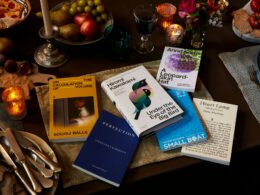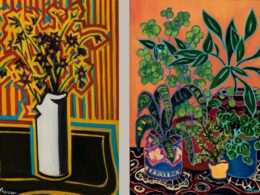Marlene Goude’s new exhibition Eutopia – What Lies Beyond, curated by Charlene Vella, opens in Wignacourt Museum, Rabat tomorrow (April 5). Times2 caught up with her to find out more about the works on show.
Your latest exhibition, Eutopia – What Lies Beyond, explores themes of childhood, nature, and existential reflection. What inspired this body of work?
The inspiration behind Eutopia is deeply personal. As a mother, I constantly observe my children’s spontaneous curiosity, their connection with nature, and their ability to embrace life’s simple joys with such unfiltered wonder. In today’s fast-paced world, we often lose this sense of untainted appreciation. I wanted to capture those fleeting, pure moments—whether it’s a child feeling the wind in their hair, marvelling at the sea, or playfully challenging nature’s elements. This collection is a reflection of that purity, a return to a world where everything is new, exciting, and deeply felt.
Your paintings feature your children. How does that personal connection shape your artistic approach?
My children are my constant inspiration: not just in their physical presence, but in the way they move, question, and experience the world. Unlike professional models, they are unaware of being observed, which allows me to capture them in their most authentic states. Their natural gestures, unguarded emotions, and interactions with nature resonate with me as an artist. I do not merely paint their likeness; I aim to encapsulate a moment that feels eternal.
The term Eutopia suggests an idealised world. How do you interpret this concept in your work?
Unlike Utopia, which refers to an unattainable perfect place, Eutopia means ‘a good place, a state of being that can exist within the real world. My paintings reflect this idea by portraying moments of harmony between children and nature, moments that are deeply fulfilling but also transient. While childhood innocence and joy are fleeting, they remain embedded in our memories, shaping our perspectives. My aim is not to depict a fantastical paradise but rather to invite the viewer to reconnect with an internal, emotional Eutopia, something that already exists within us.

Nature plays a crucial role in this exhibition. What message do you hope to convey about humanity’s relationship with the natural world?
I believe modern life has distanced us from nature, both physically and spiritually. Many of us experience what has been termed “nature-deficit disorder”, that is, a disconnection that leads to restlessness and unease. My paintings are an invitation to rekindle that bond, to make us think mindfully. To find time to meditate for the simple things in life. The children in my work are depicted as intrinsic parts of nature, whether they are by the sea, in meadows, or immersed in elemental forces. There is an innate harmony in these interactions, reminding us that we, too, are part of nature, not separate from it.
Some works in Eutopia include allegorical and mythological elements. What role does symbolism play in your work?
Symbolism allows me to explore deeper meanings beyond the immediate image. For example, in one painting, a child holds a conch shell, embodying Neptune, a moment of playful reverence for the sea’s power. In another, a winged child falls through the sky, laughing despite the presence of ominous crows, reflecting the resilience and fearlessness of youth. Everyday objects, like a simple bunch of garlic, become symbols of protection and good fortune. These layers of meaning allow viewers to interpret the work in personal ways, creating their own connections to the themes.
Your brushwork varies from impressionistic to expressionistic across the collection. How does this evolution reflect your artistic direction?
The earlier works in the exhibition have a softer, more impressionistic quality, where light and atmosphere take precedence. As the collection progressed, my brushwork became more expressive, mirroring a shift in both emotion and perspective. This transition is intentional; it represents movement, growth, and the evolving nature of both the child and the artist. I see this as a bridge to my future work, where I may explore more raw, abstract interpretations of human experience.
Your paintings exude a strong sense of nostalgia. Do you see your work as a reflection of your own childhood as well?
Yes, in a way. While the primary focus is on my children’s world, these works also serve as a means of revisiting my own past. There is a sense of longing in Eutopia: not necessarily for childhood itself, but for the way we once saw the world, before life became layered with complexity. Through painting, I attempt to unlearn adulthood’s constraints and reclaim that sense of uninhibited joy and presence.
If there is one takeaway you hope visitors leave with after experiencing Eutopia, what would it be?
I hope visitors leave with a sense of stillness, of presence, and of connection, not only to the art but to their own experiences. I want them to reflect on their own childhood, their relationship with nature, and the moments of peace they may have overlooked in their daily lives. If Eutopia can serve as a reminder to embrace life’s simple, profound joys, then I feel I have succeeded.
Eutopia – What Lies Beyond is open April 5-28 at the Wignacourt Museum, Rabat










